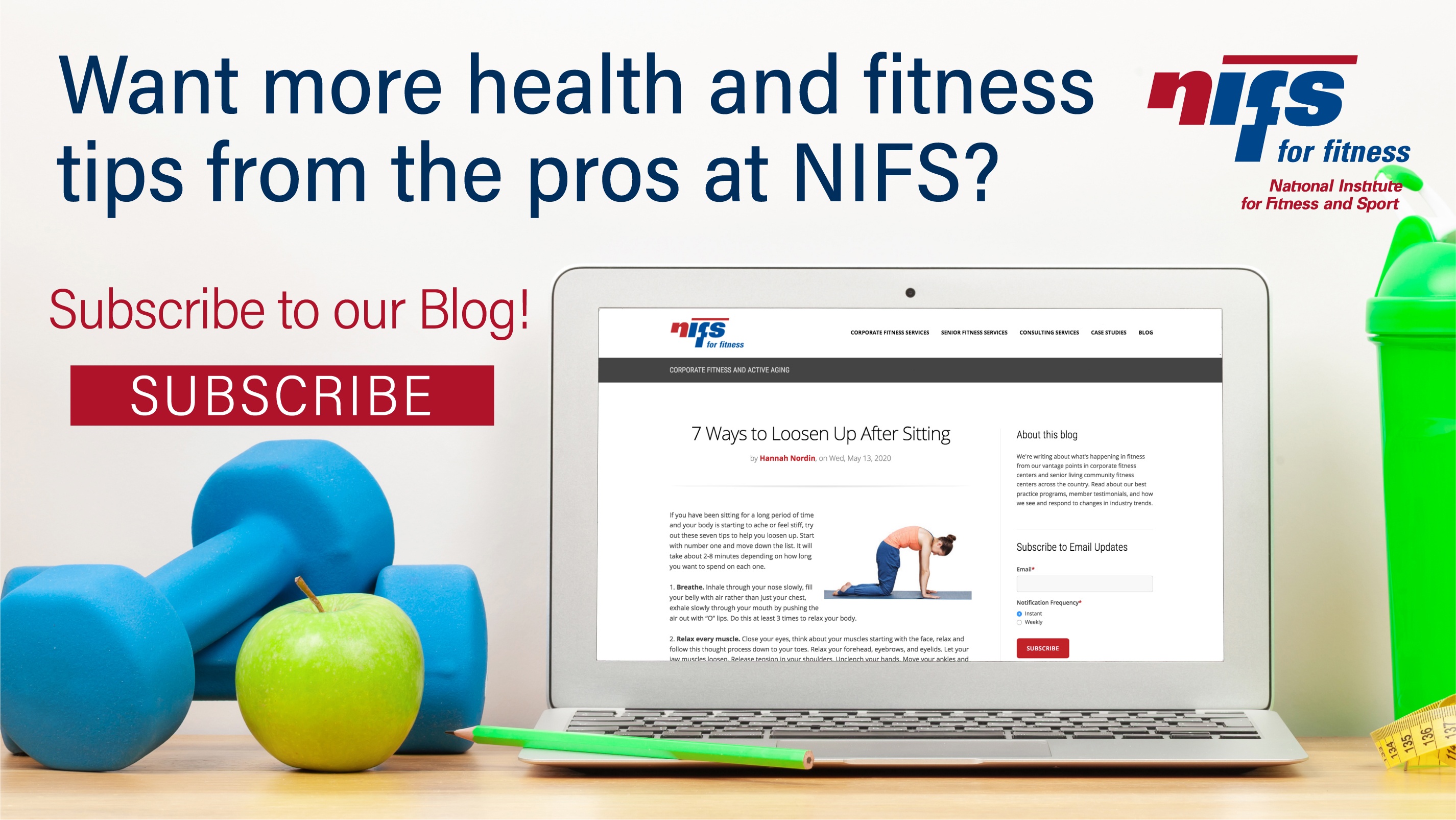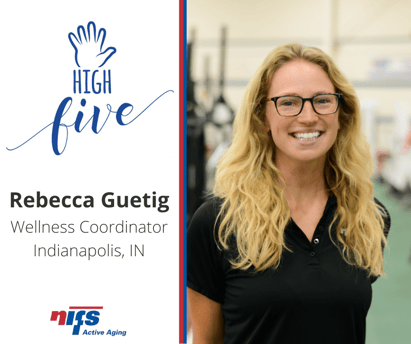 We say it with pride quite regularly, our amazing staff in corporate and senior living fitness centers are what help us serve our clients so well. Their strong educational background in health and fitness helps us set the bar high while their exceptional creativity and relationship building skills allows them to keep their members engaged and asking what’s coming next. Since we have the privilege of getting to know our staff across the country, we thought our followers might like to as well. Join us monthly as we throw a different NIFS team member a High Five.
We say it with pride quite regularly, our amazing staff in corporate and senior living fitness centers are what help us serve our clients so well. Their strong educational background in health and fitness helps us set the bar high while their exceptional creativity and relationship building skills allows them to keep their members engaged and asking what’s coming next. Since we have the privilege of getting to know our staff across the country, we thought our followers might like to as well. Join us monthly as we throw a different NIFS team member a High Five.
- Name: Rebecca Guetig
- City, State: Indianapolis, IN
- Years with NIFS: Part-time in college, including a summer internship 2010 – 2015, then full time from 2015 until now
- Position: Wellness Coordinator at a Senior Living Community
- What brought you to NIFS: I wanted to work in an environment that revolves around wellness
- What is the most impactful moment you have shared with a member: A newer resident moved from a different community, after some encouragement to come to programs, she finally started to and became pretty social after giving it a shot. She said she hasn’t been this happy in a long time and thanked me for continuing to invite her come for classes and programs.
- What separates a NIFS fitness pro from the rest: NIFS requires a high level of creativity and customer service excellence and comes with a large network of resources. I enjoy the balance of structure and autonomy NIFS provides me.
- What is your favorite thing about working at your client site: I enjoy being with the senior demographic more than I ever would have imagined when I started my career in the health and fitness industry. There’s something special about working in this setting; there’s an abundance of fulfillment.
- What motivates you: I know what we teach our members makes a difference, we see it every day.
- What is your favorite hobby: I love to turn on some Louis Armstrong and whip up something in the kitchen… no recipe and a glad of red wine.

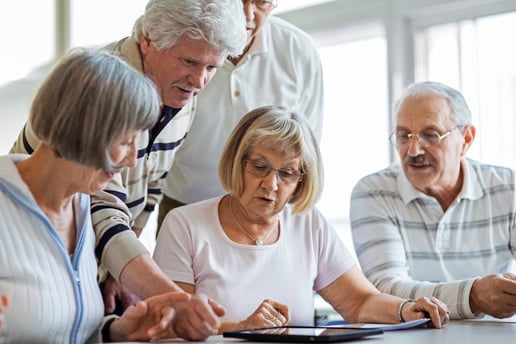 How can older adults improve their wellbeing, grow closer to others, and enhance the community in which they live? Practicing vocational wellness is a great way to accomplish these important feats.
How can older adults improve their wellbeing, grow closer to others, and enhance the community in which they live? Practicing vocational wellness is a great way to accomplish these important feats.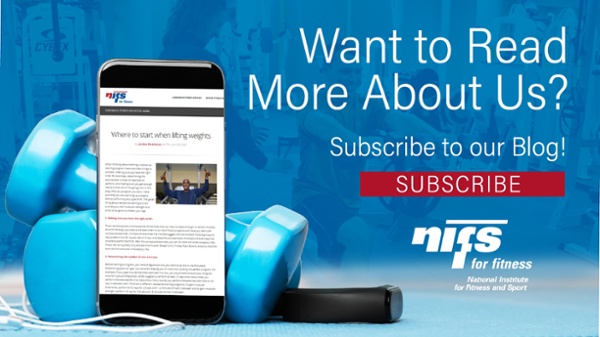
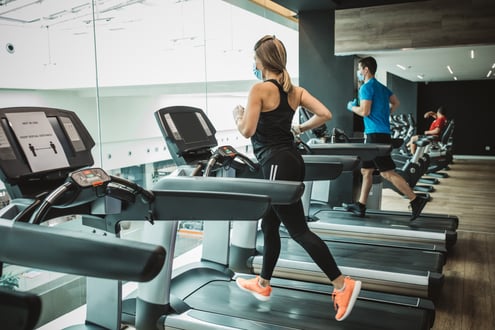 As more companies welcome their employees back to the office, they are also developing reopening strategies for their onsite fitness centers. It’s one thing to establish social distancing protocols in office spaces, breakrooms, etc., and it’s a whole other ballgame managing traffic in and out of the dynamic environments of locker rooms and fitness centers full of movement. NIFS has been helping our clients prepare their reopening plans so they can do so with confidence that this engaging space is safe for their employees. As your organization considers its reopening plans, review these considerations and align policies that best support your space and programming expectations of your members.
As more companies welcome their employees back to the office, they are also developing reopening strategies for their onsite fitness centers. It’s one thing to establish social distancing protocols in office spaces, breakrooms, etc., and it’s a whole other ballgame managing traffic in and out of the dynamic environments of locker rooms and fitness centers full of movement. NIFS has been helping our clients prepare their reopening plans so they can do so with confidence that this engaging space is safe for their employees. As your organization considers its reopening plans, review these considerations and align policies that best support your space and programming expectations of your members.
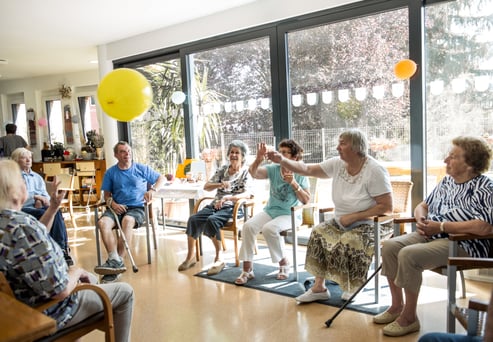 Throughout the past year, everyone’s wellness routine has been thrown upside down at some point or another. Maybe you figured out what your ‘new norm’ looks like, you are not sure where to start, or you are somewhere in the middle trying to find that new norm. A lot of the residents at the senior living community where I am employed are unsure of where to start, specifically after the pandemic.
Throughout the past year, everyone’s wellness routine has been thrown upside down at some point or another. Maybe you figured out what your ‘new norm’ looks like, you are not sure where to start, or you are somewhere in the middle trying to find that new norm. A lot of the residents at the senior living community where I am employed are unsure of where to start, specifically after the pandemic.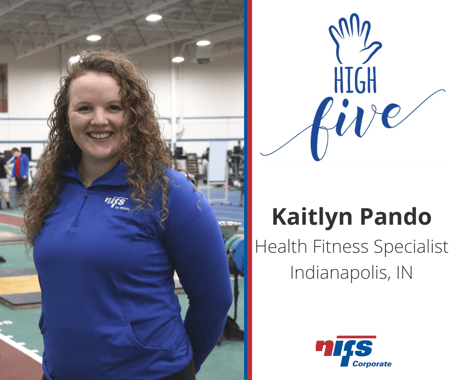
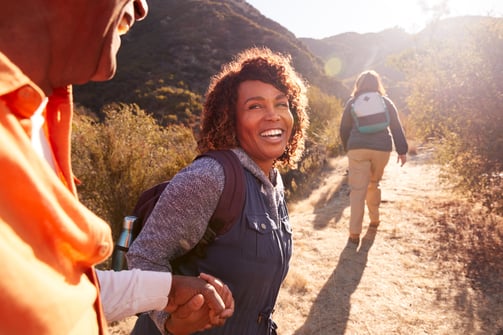 Hiking is amazing in so many ways. It is great for physical activity, mental health and stress-relief, cardiovascular health, socialization and more. I’ve always loved the outdoors, but my love for hiking drastically increased when I went to Sedona, Arizona. The red rocks, the greenery, the breeze thousands of feet above sea level…breathtaking. No matter where you hike, you will experience many wonderful things along the way. If you have never hiked before or have only hiked a handful of times, follow these five steps for a great hiking experience:
Hiking is amazing in so many ways. It is great for physical activity, mental health and stress-relief, cardiovascular health, socialization and more. I’ve always loved the outdoors, but my love for hiking drastically increased when I went to Sedona, Arizona. The red rocks, the greenery, the breeze thousands of feet above sea level…breathtaking. No matter where you hike, you will experience many wonderful things along the way. If you have never hiked before or have only hiked a handful of times, follow these five steps for a great hiking experience: